Building of the Day: 347-359 Flushing Avenue
Brooklyn, one building at a time. Name: Industrial buildings and garages Address: 347-359 Flushing Avenue Cross Streets: Classon and Kent avenues Neighborhood: East Williamsburg Year Built: Teens for the handsome brick garage, undetermined for the rest Architectural Style: Taxpayer Architect: Unknown Landmarked: No The story: Ok, there is nothing significant or outstanding about these buildings. In…
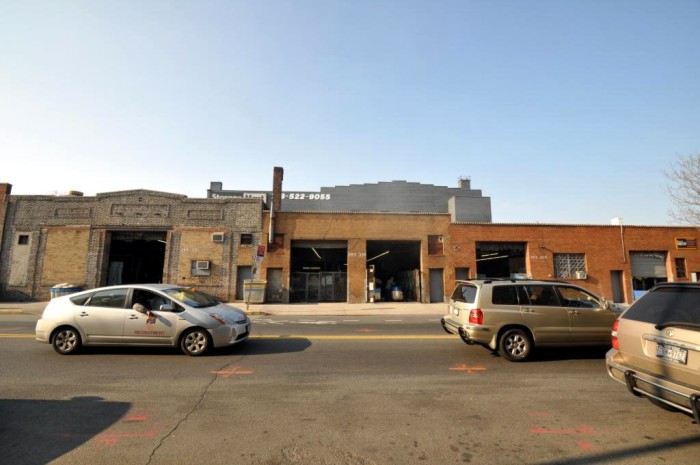

Brooklyn, one building at a time.
Name: Industrial buildings and garages
Address: 347-359 Flushing Avenue
Cross Streets: Classon and Kent avenues
Neighborhood: East Williamsburg
Year Built: Teens for the handsome brick garage, undetermined for the rest
Architectural Style: Taxpayer
Architect: Unknown
Landmarked: No
The story: Ok, there is nothing significant or outstanding about these buildings. In fact, with the exception of the larger garage, which has some style, these are basic taxpayers: utilitarian buildings built to house rather humble pursuits. But, I chose these for a reason, because there is still a story here. A number of stories, actually, both past and present.
Before the BQE, back in the 1800s, this part of town was pretty much residential. Small tenement buildings, many with storefronts on the ground floor lined this side of Flushing Avenue, as well as a couple of houses. The people who lived here worked in the nearby factories, and at the Navy Yard. The buildings that stood where this group stands now were numbered 347-359 Flushing, and there were at least seven buildings here at the turn of the century.
All of the individual buildings had tenants. 353 Flushing was a gathering space or had club space on the ground floor. In 1898 it was known as Kearn’s Hall. Even earlier, in 1881, number 357 was a saloon belonging to Martin Schultz. That year, two drunk revelers, named quite improbably, George Quinn and Michael Winne, were ejected from the bar one night for being drunk and belligerent. Of course, once outside, they were angry, and threw rocks through the window, breaking it and injuring Martin Schultz. They were arrested, and no doubt regretted their actions the next morning.
347-49, the brick garage building, was a tenement up until the late ‘teens. In 1919, after the parking garage was built, it was the catalyst of a tragic police accident very reminiscent of recent events. A young patrolman named Frank Lisa was patrolling nearby when he heard gunshots. He ran to the garage, where someone reported that five shots had been taken at the garage. The person that reported the incident said that the gunman had run into the apartment building on the corner, 341 Flushing Ave, and up the fire escape.
Officer Lisa ran to the apartment building and made his way to the fire escape. There he saw a figure on the landing. He called for the individual to stop and turn around. When the figure did so, he had his hand outstretched, and Officer Lisa thought he saw a gun and fired his weapon. He shot and killed 15 year old Peter Jerribek, who lived in the building. The bullet killed him instantly, hitting him in the eye.
No weapon was found on the teen, and Officer Lisa was arrested, pending an investigation. It turned out that the incident was even more tragic that it initially appeared. Peter Jerribek had worked at the garage, and had noticed a man named Brown getting ready to take out a car that wasn’t his. Peter tried to stop him, and according to witnesses, there was a scuffle and the shots were fired. Brown had run off, and the boy had gone home, and was on the fire escape to look to see where Brown went. That’s when the police showed up.Lisa must have been cleared, as his name appears nineteen years later, when as Sergeant Lisa, he was promoted to lieutenant in 1938, in a precinct in Queens, where he lived.
Since the garage replaced at least two mixed use buildings as early as 1919, I would imagine the other tenements disappeared one by one by World War II. Notices for deaths, arrests, and other activities in some of the buildings corroborate that timeline. Since this stretch was now completely commercial, it became home to garages and one story industrial buildings.
Today, the entire row is now a dye works. In my previous life, I used to use companies like this for work. They are now few and far between. The two names that come up in my search at this location are Dye-Namic and Colortex. These companies dye fabric, piece goods and trim. The company I used to work for used to have them dye terry cloth for brightly colored beach towels. It’s an interesting industry, and I used to love to watch the process.
Inside these buildings, are large industrial washing machines and dryers, large cauldrons of boiling water, and cold water dye baths, as well as sorting tables and racks to dry lace and delicate goods. The master dyer has a room full of dye chemicals and substances, and his book of formulae for each color. A good dye master can mix the same shade time after time, and knows just how much of a color to add to tweak it, or change it entirely. It’s almost a lost art, and the old guys in the business don’t use computers.
Still, you have to be of stern constitution, it’s hot and wet work, and the working conditions are pretty awful. Everyone who works on the floor has to wear their wellies all day long, and waterproof and heatproof aprons and rubber gloves. If you have to pass this way, you often see workers pushing the carts of goods to be dyed, or goods ready for drying or rolling. There were once dozens of dyers in Williamsburg and Bushwick. I think this is the last one standing.
(Photo: Christopher Bride for PropertyShark)
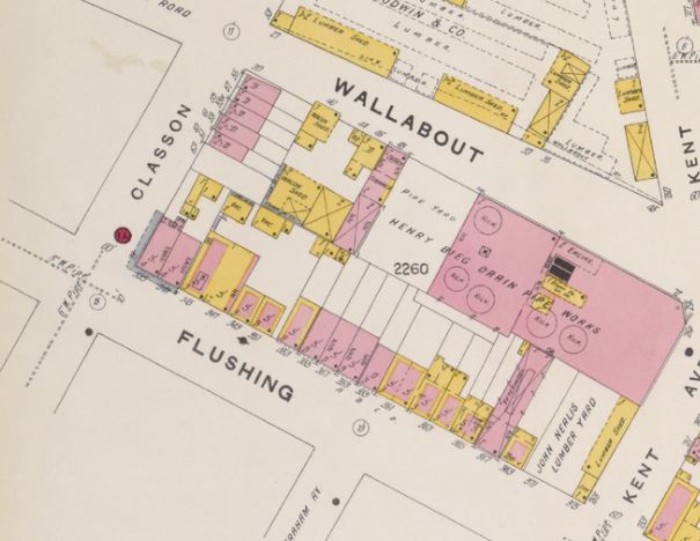
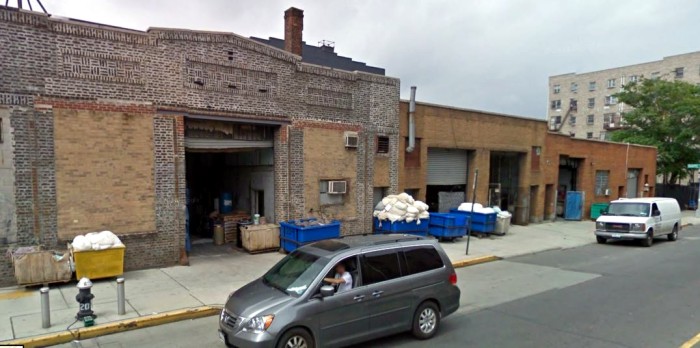

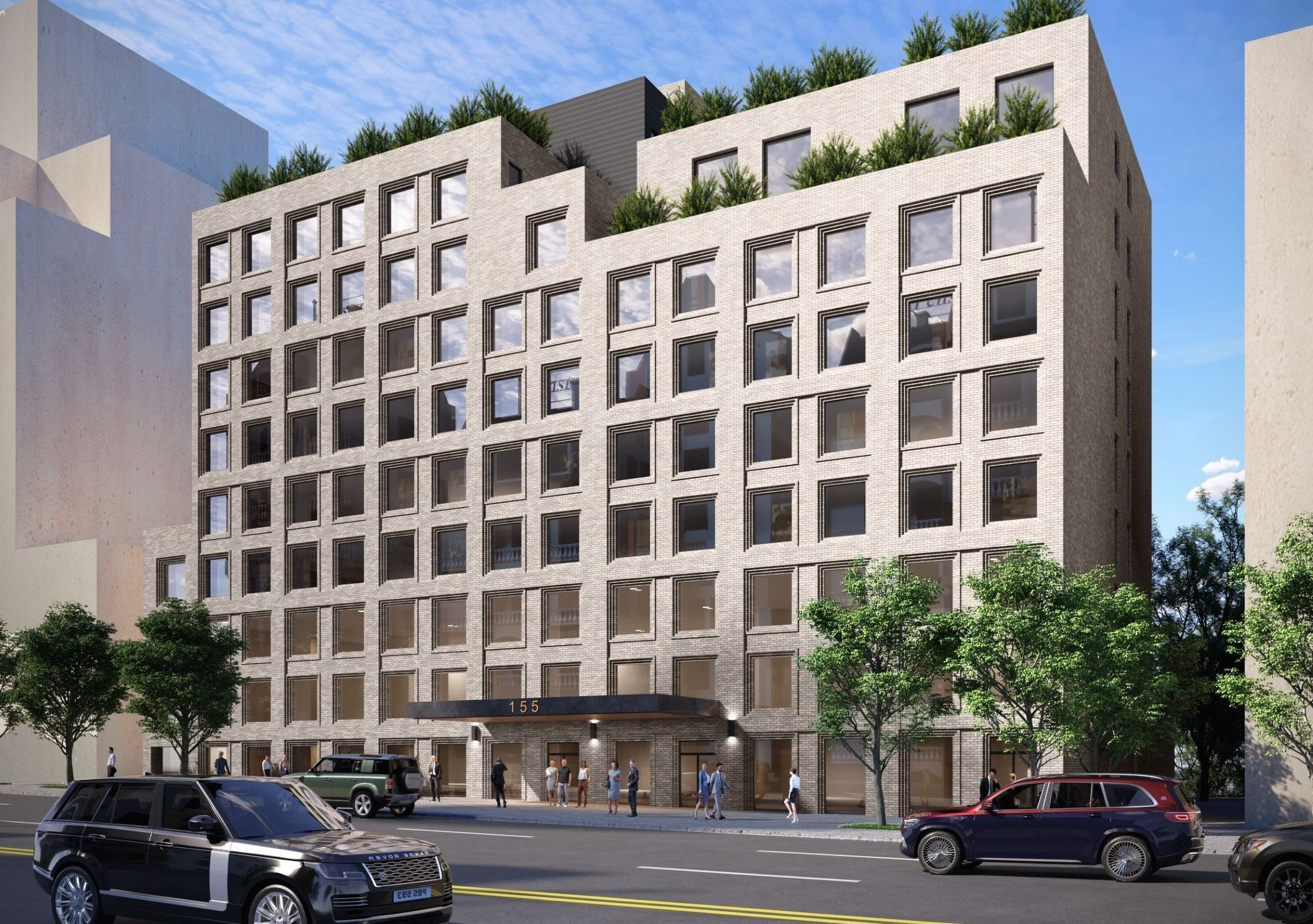
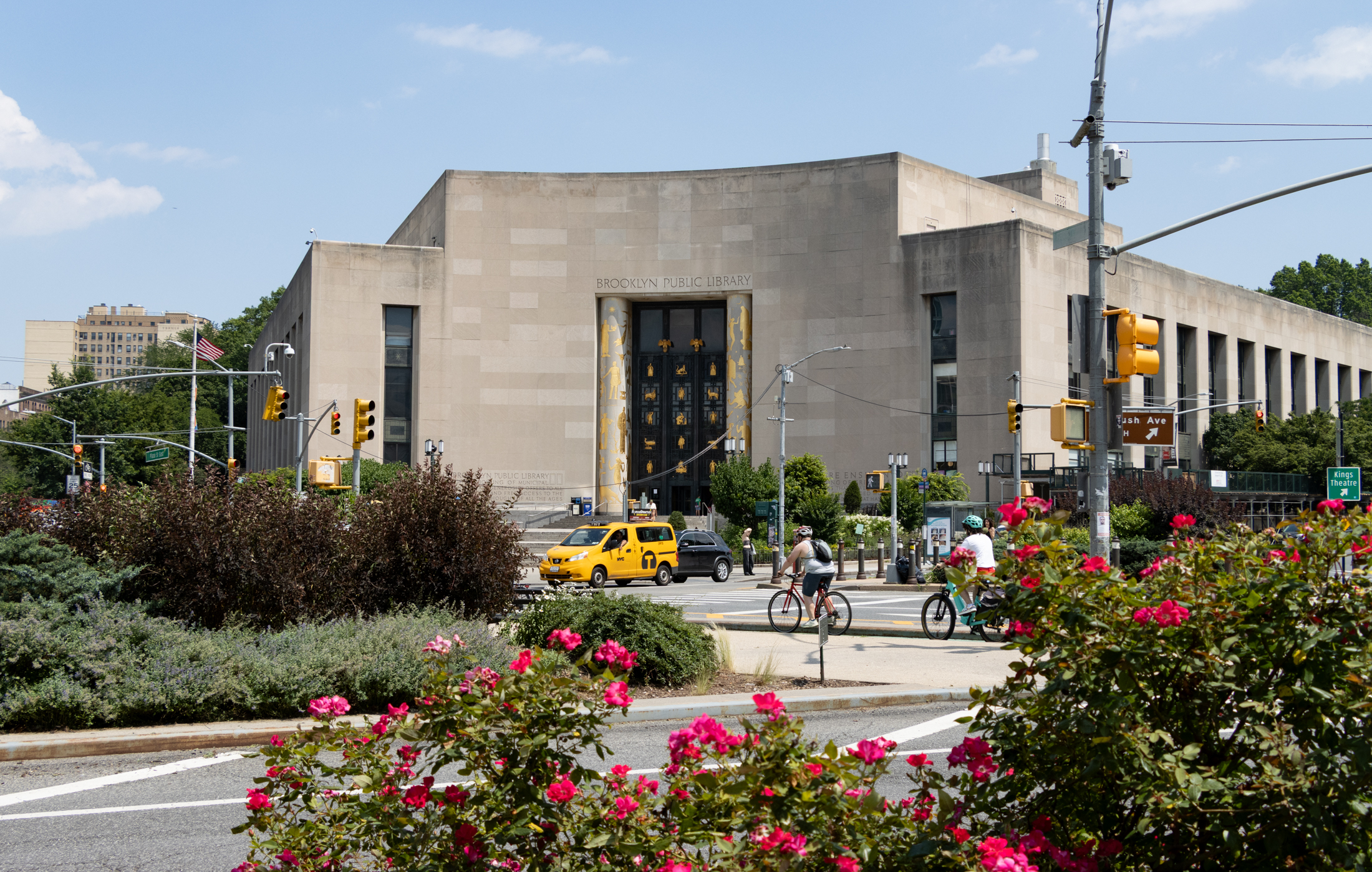
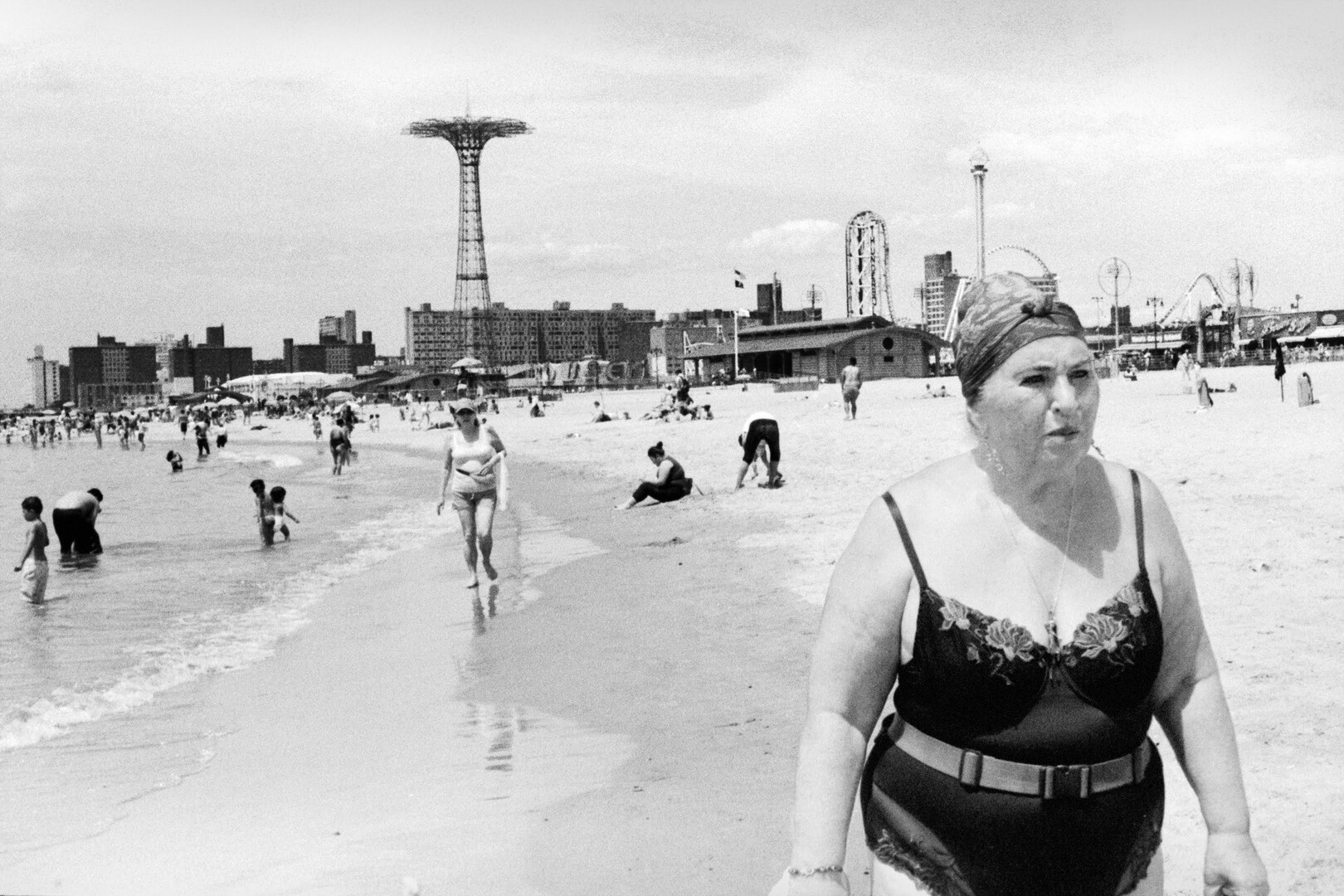
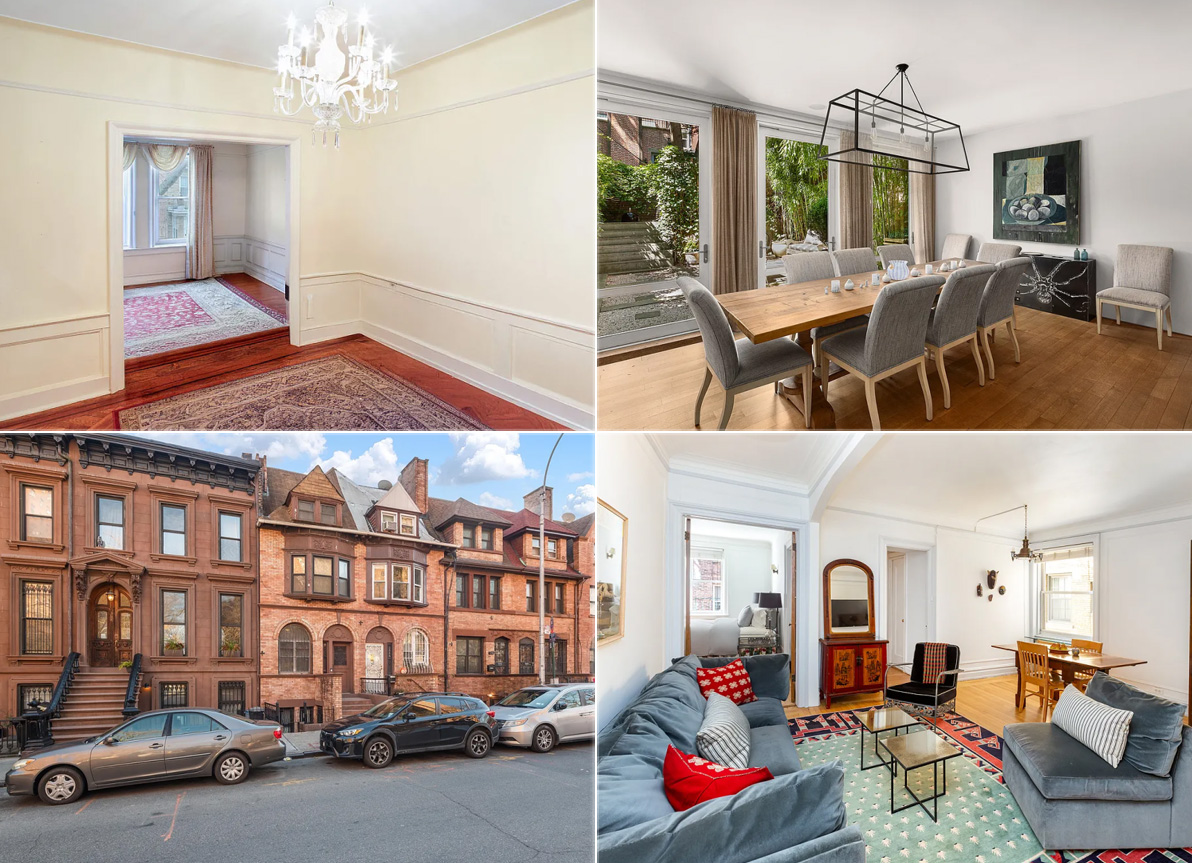
What's Your Take? Leave a Comment